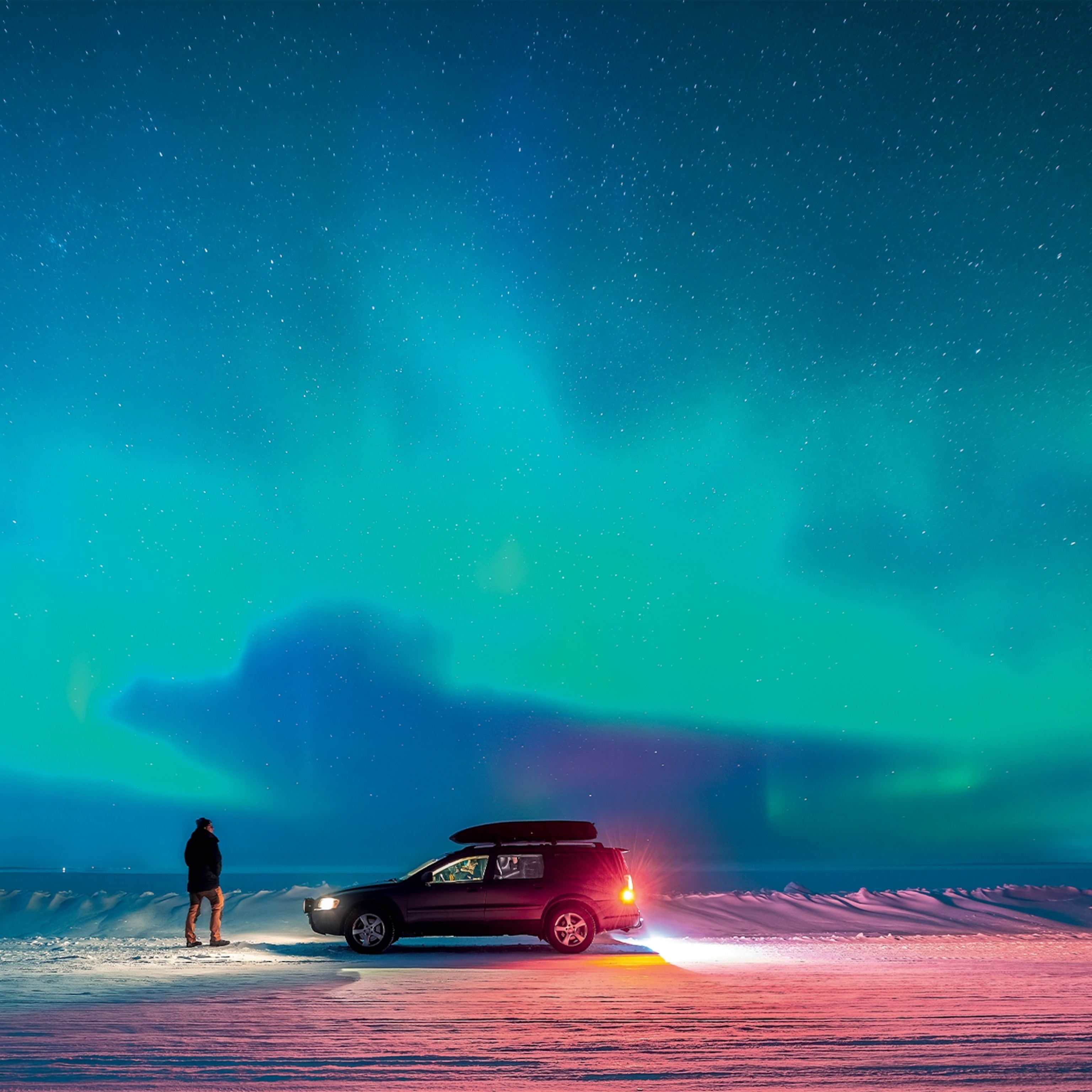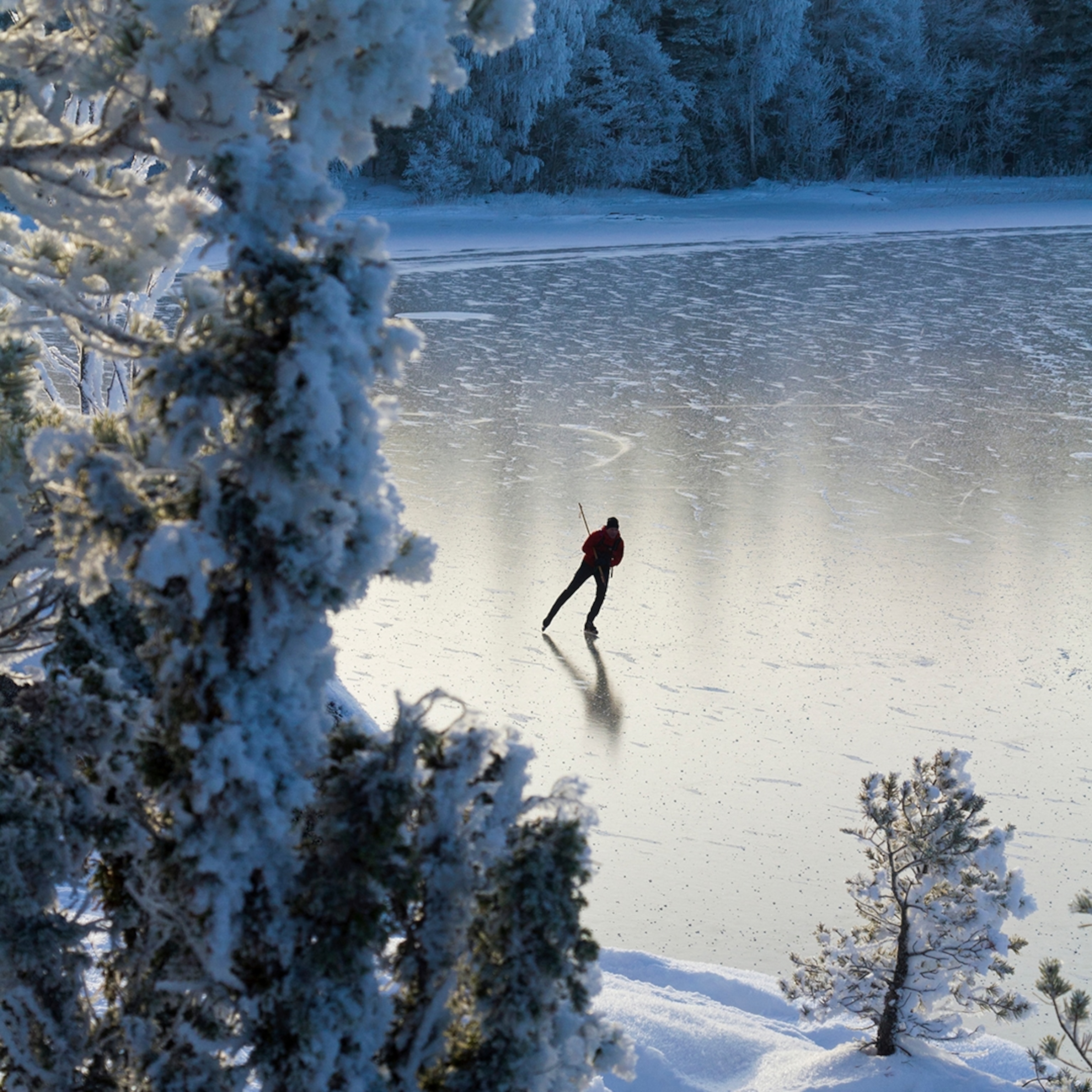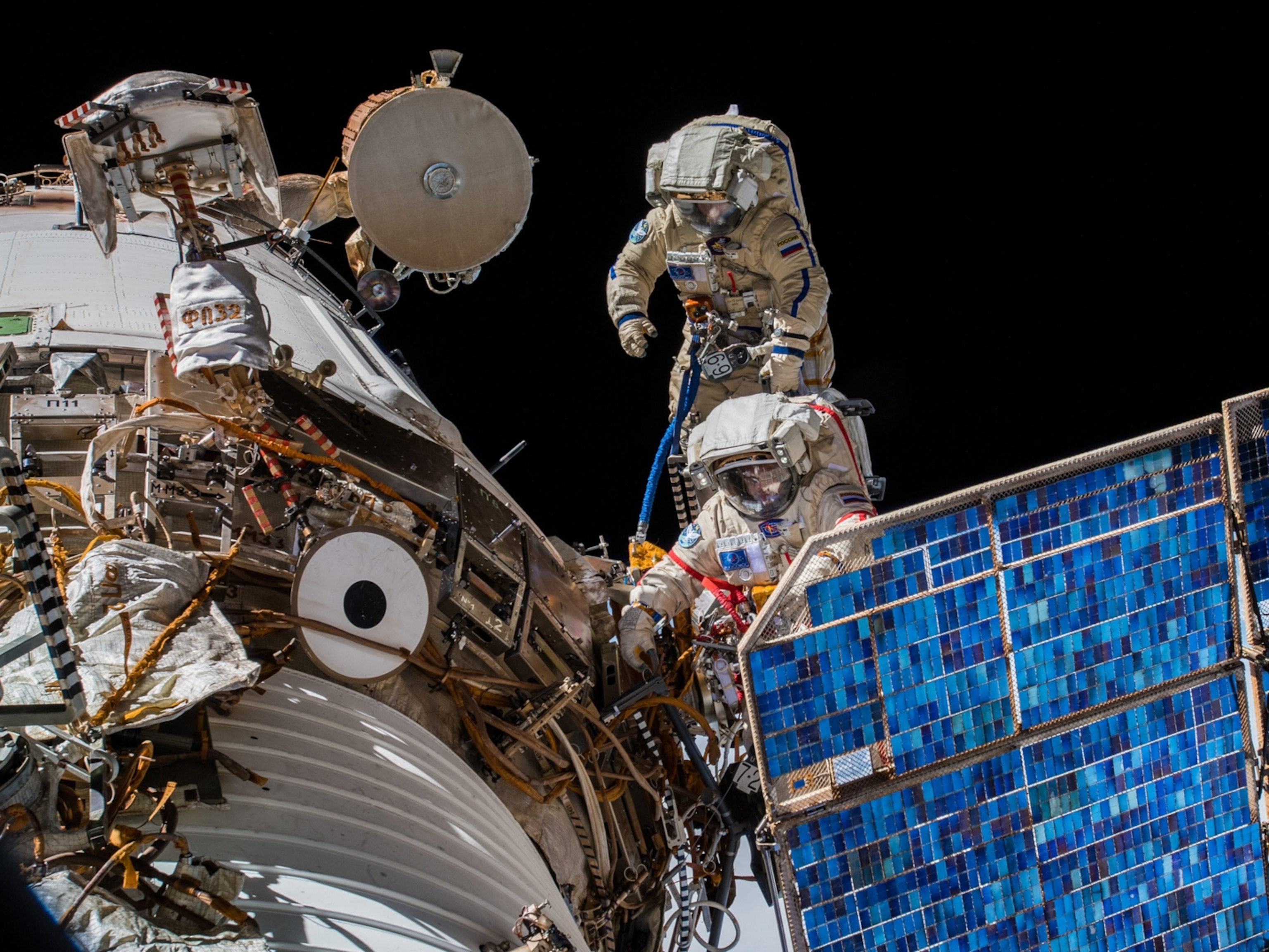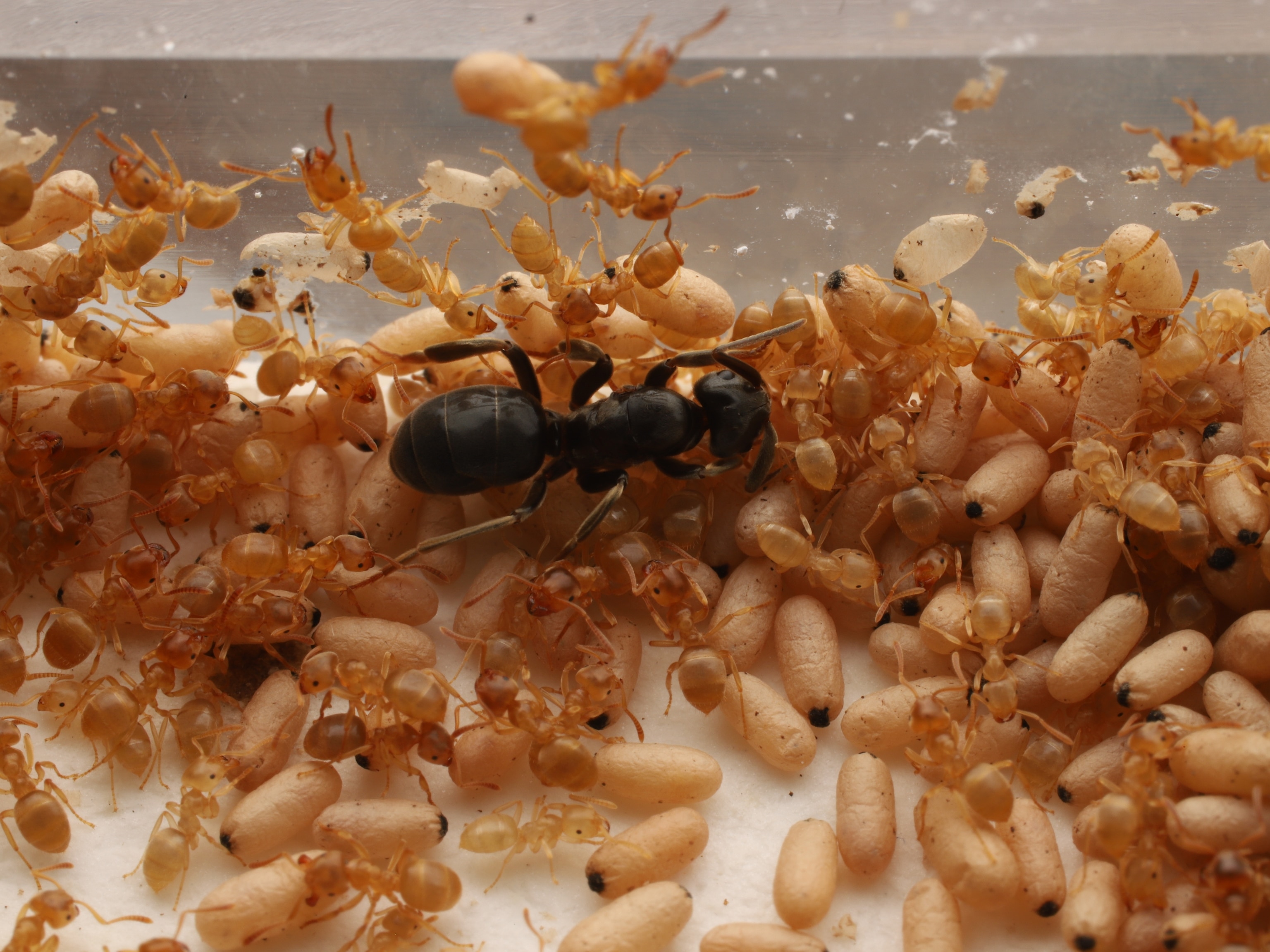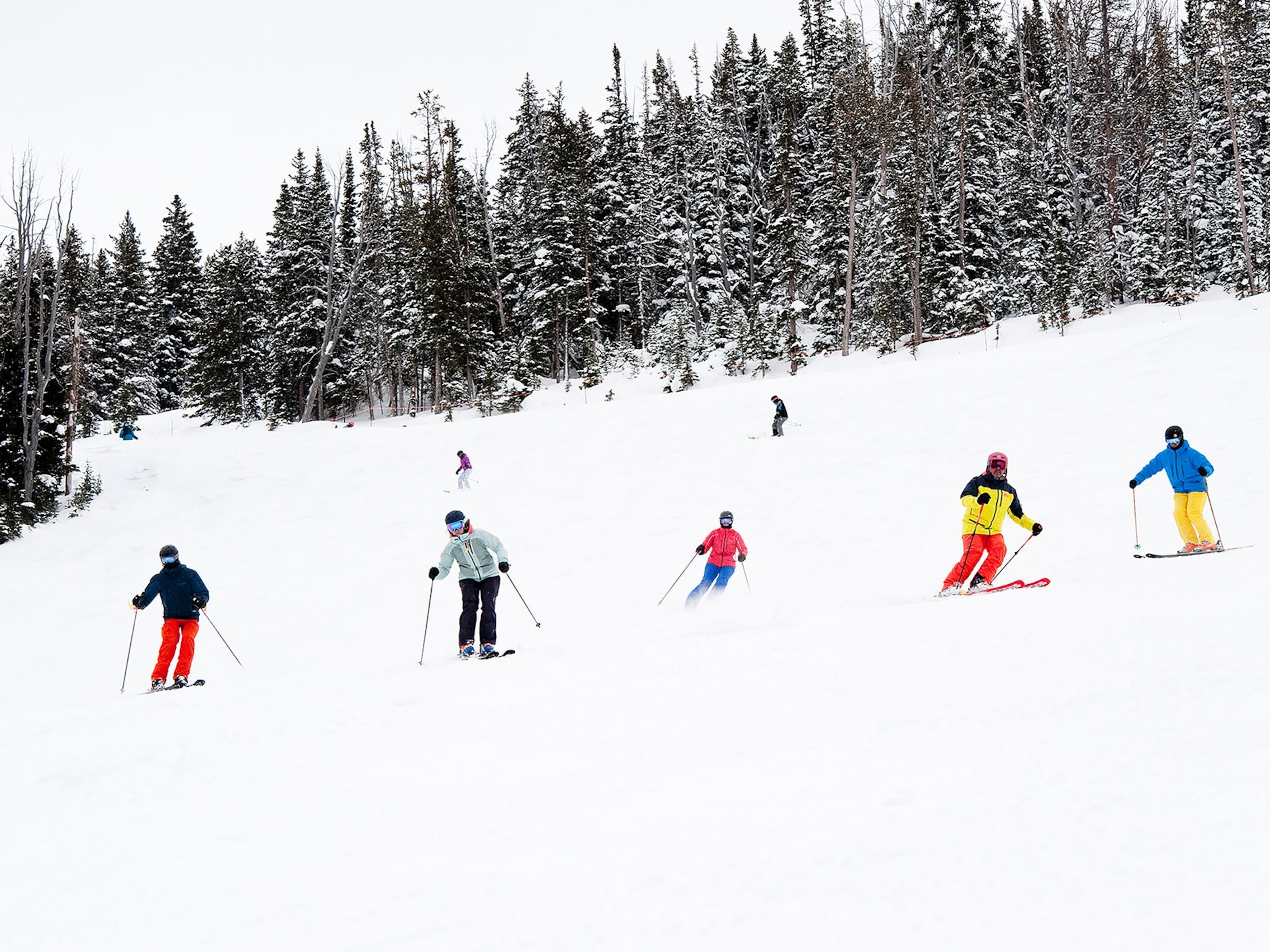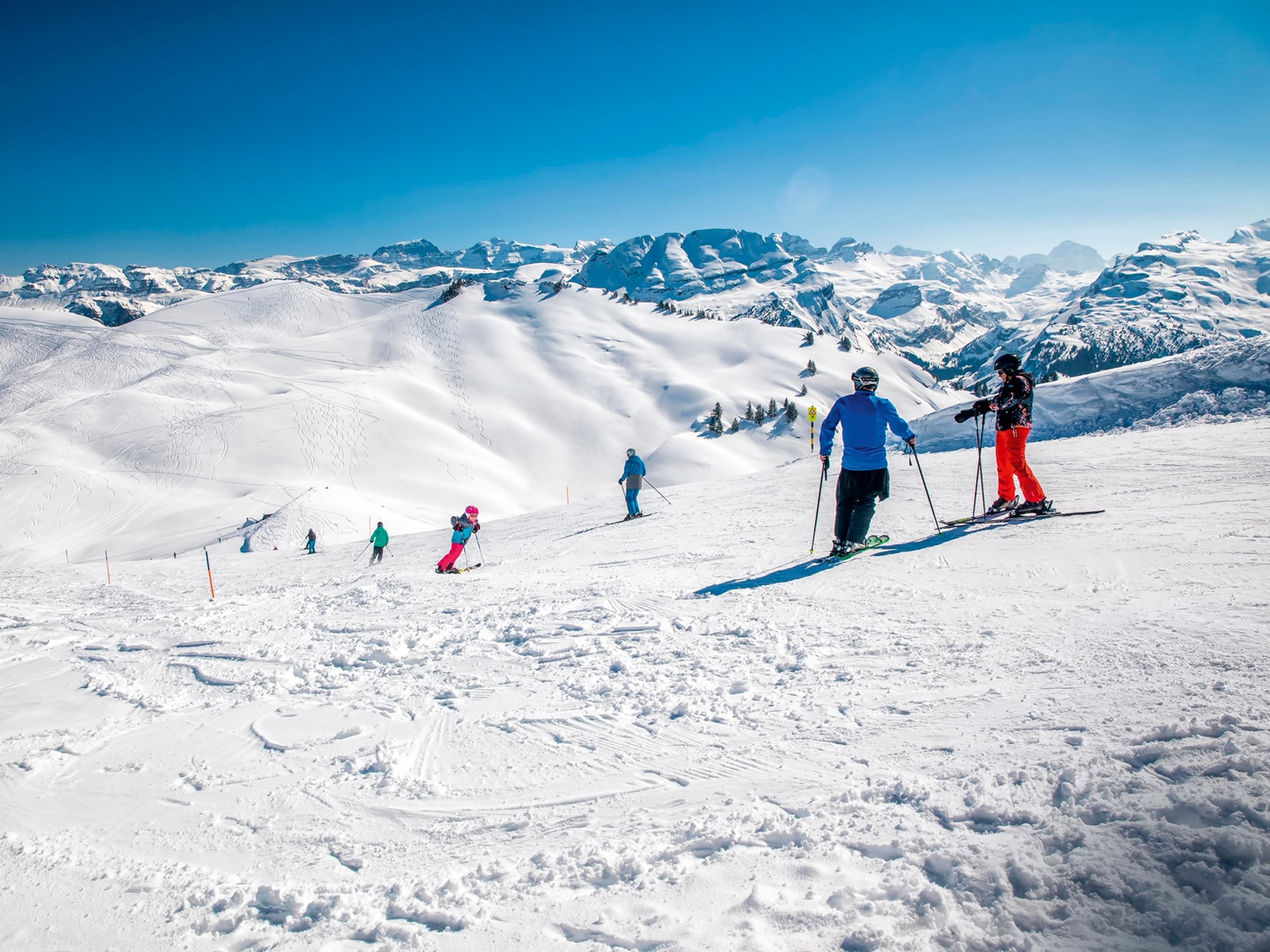
‘It really is like flying.’ Explore wild skating on nature’s ice
Seeking a sense of freedom, outdoor adventurers lace up for America’s frozen rivers and lakes.
It was cold, quiet, and well after dark when Matthew Baxley glimpsed the slumbering fish directly beneath his feet. He was ice skating in the Boundary Waters Canoe Area Wilderness, a Minnesota landscape of boreal forest and seemingly boundless lakes. Below him, black ice revealed an underwater world in crisp detail.
Each stroke of Baxley’s skates sent vibrations across the lake’s solid surface. The weight of a single skater can trigger groans and pops, or the “pew-pew” sound of cartoon ray guns, adding to the otherworldly feel of gliding through space. The early winter’s cold, snowless weather had turned the Boundary Waters into a perfectly smooth, natural playground.
“There’s just no resistance,” says Baxley, who tells stories about exploring Minnesota wilderness in his Boundary Waters Podcast. “It really is like flying.”
Humans have been skimming across frozen water for millennia; the oldest known ice skates, made from animal bones, date to 1800 B.C. The majority of such artifacts come from Scandinavia, the Netherlands, and Finland, where the frigid weather and waterlogged landscapes made skates an efficient tool for winter travel. Where walkers trudged, skaters could glide.
Thousands of years later, ice skating on unmaintained lakes and rivers—what aficionados call “wild skating”—provides a similar combination of locomotion and escape. A taste of freedom amid an ongoing pandemic, this outdoor adventure has become a hot trend in cold regions of the United States.
The ultimate free skate
When indoor rinks closed last spring due to COVID-19, sales of ice skates cratered, says Dan Riegelman, owner of Minnesota-based manufacturer Riedell Skates. But as winter approached, a surge of sales across the northern U.S., where skating can be done outside, helped buoy the company.
“The sport has just exploded in popularity,” agrees Paxson Woelber, a wild skater in Anchorage, Alaska. Nearby shops sold out of skates in October, he says, supporting a community of people who spend the cold months hunting for the perfect slippery surface.
“It’s so special to find good ice,” he says. “A lot of the time you find nothing. But sometimes you do show up and there’s just this amazing mirror, a sheet stretching between the mountains. And then it’s just incredible.”
(‘Wild swimming’ is another antidote to cabin fever.)
When Woelber is sliding across Alaska’s wild ice, documented in the video below, he doesn’t use figure or hockey skates. He wears Nordic ice skates, which have steel blades fitted with bindings that allow skaters to lift their heels and push off with every stroke.
“You have much more stability on rough ice,” explains Ben Prime, owner of the Nordic Skater shop in Newbury, New Hampshire, adding that the long blades (ranging from 15 to 21 inches) make it easier to cover long distances. Other essential gear includes sharp-tipped poles for balance and extra power, and a throw bag, which holds a rope that can be tossed to a skater who has plunged through the ice. Skaters also carry ice claws, handheld spikes used to climb out of the water.
The need for such gear, and the training to use it, points to wild skating’s inherent dangers. To avoid overly thin ice and hard-to-spot holes, skaters must test the surface as they go by poking it with their poles, twisting in an ice screw, or even throwing a heavy rock. Many longtime skaters have gone under or seen a companion fall into the water. While the risk sends most skaters to the thickest—and safest—ice, some devotees are intent on finding pristine sheets of slim ice.
“Thin ice is literally smoother than Zamboni ice,” says Laura Kottlowski, a Colorado skater who ranges the Rocky Mountains and beyond in search of flash-frozen alpine lakes. For her, the perfect ice is between two and three inches thick, with a flawless, obsidian-dark shine.
As a figure skater, Kottlowski has found that such glossy ice makes an ideal canvas for a centuries-old artform. In the early days of the sport, she explains, skaters didn’t leap and twirl like they do in today’s Olympic Games. Instead they etched intricate shapes into the surface of the ice, something that Kottlowski has grown to love. (Watch her trace a mandala in a frozen canyon.)
Making it child’s play
For beginning skaters and families, truly wild skating isn’t the place to start, Kottlowski says. A better option is one of the many frozen lakes and rivers that are groomed, which means a more predictable surface and a far lower risk of plunging in.
With a backdrop of forested peaks, Colorado’s Evergreen Lake is one of Kottlowski’s favorites. The 8.5 acres of ice make it among the most extensive Zamboni-maintained outdoor skating destinations in the world. But wherever the weather is cold enough, you’ll find family-friendly spots to skate.

In Vermont, skaters head to pretty Lake Morey, where a 4.3-mile skate trail ranks as the longest in the U.S. This winter, neighbors in Warroad, Minnesota, collaborated to create the Riverbend Skate Path, turning the meandering Warroad River into a 2.5-mile, natural skating track that links a series of outdoor rinks. Near downtown Anchorage, skaters looping across the ice at Westchester Lagoon might spot moose and foxes wandering past the frozen shoreline.
(Get inspired by this Norwegian concept of outdoor living.)
Such groomed destinations help extend the heartbeat-quick window for skating natural ice. A backcountry lake, for example, might offer favorable conditions for just a few brief days before the surface is obscured by snowfall. For some skaters, the fleeting nature of wild skating is part of the appeal; Kottlowski hikes hours into the Colorado hinterlands looking for good ice and knowing she might not find it.
Contributing to science
Skating has always been an ephemeral pleasure, but climate change is starting to melt away the season that skaters savor.
“Really cold temperatures are arriving much later,” says Robert McLeman, professor of Geography and Environmental Studies at Wilfrid Laurier University in Waterloo, Canada. Meanwhile, the first spring thaws are coming earlier, he says. “You see a lot more yo-yoing, and therefore a shrinkage in the number of really good-quality skating days.”
McLeman is a founder of RinkWatch, a citizen science initiative in which participants monitor their local rinks to document the long-term effects of climate change. For McLeman, it’s not just about the data. He also aims to make science personal for cold-weather sports lovers.
(Volunteers are helping scientists study nature during the pandemic.)
“How climate change may affect backyard skating or outdoor skating—that’s something they can actually relate to,” he says. “That direct connection may be missing from what they hear about or read about when it comes to climate change.”
On the RinkWatch website, the image of a tiny skater marks every submission on a map of the world. Dated entries recount ice conditions from Alaska to Russia, offering moment-in-time reports of winter weather. When submitting, participants use a dropdown menu, choosing between “skateable” or “not skateable.”
The drop-down menu doesn’t include options to record the beauty of clean lines traced by sharp blades or the startled laugh of a skater seeing a fish underfoot. Perhaps there’s no time. The good ice, after all, won’t last for long.
Vermont-based travel writer Jen Rose Smith covers outdoor adventure, remote places, and traditional cuisine. Follow her on Twitter.
